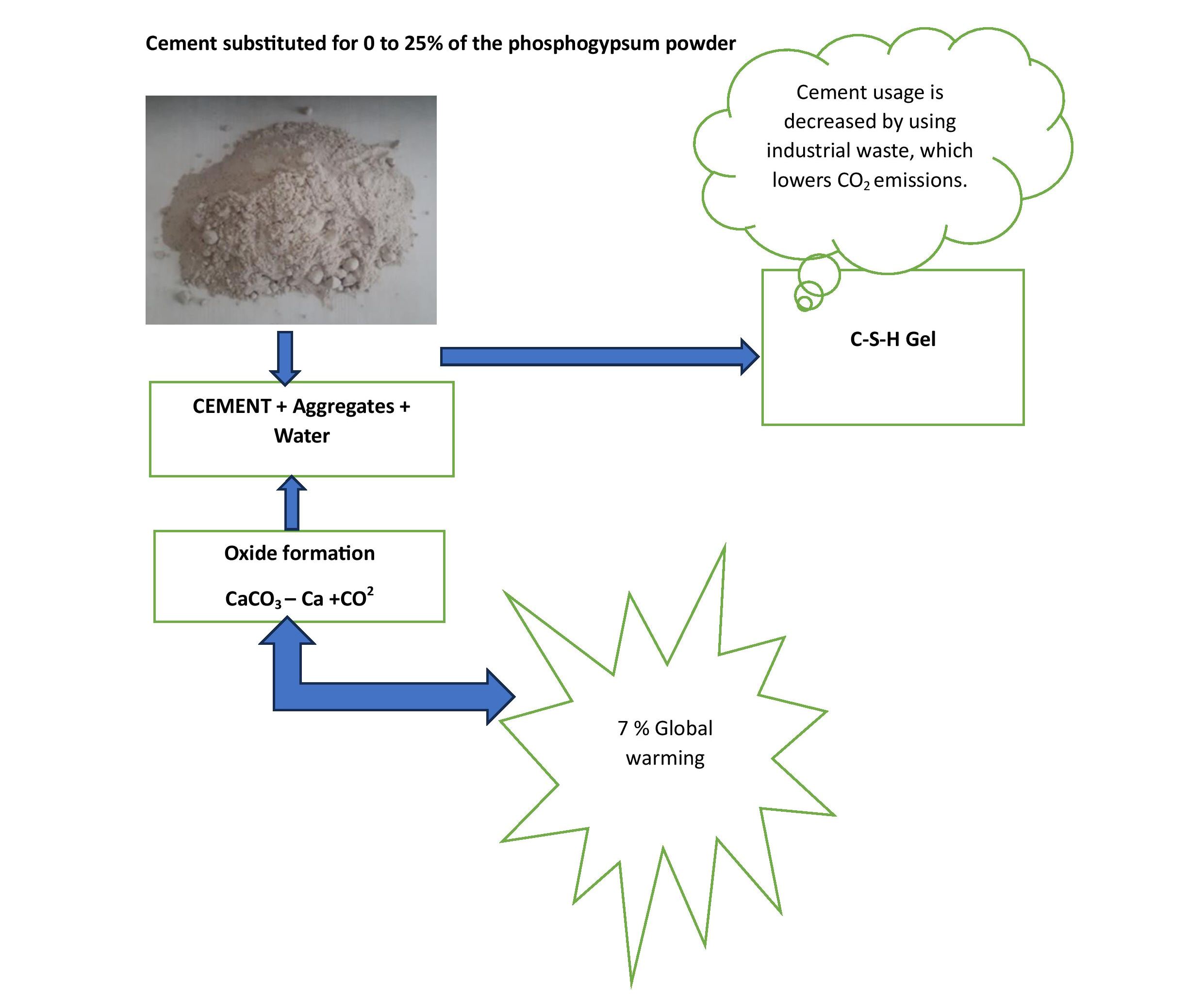
The construction industry looks over the material alternatives whereby the conventionally materials can be replaced. The conventionally materials like fine aggregate, cement, as well as coarse aggregate. The replacements for the conventional materials are wider but the waste products and its by-products could be the better alternative. It contributes in recycling the waste and converting into useful products. Other factor to be considered while producing the cement it leaves out lot of polluting factors (CO2) causes environmental degradation which is in the alarm rate. So, these factors are taken into account while finding the alternative materials to replace the construction materials. One among the industrial waste materials is phosphogypsum, which is till date discarding in the water bodies leads to environmental pollution. In this work phosphogypsum is considered as supplementary cementitious substituent in the concrete. In this study, different amounts of phosphogypsum were mixed with cement to study various qualities of concrete.The outcomes improved by 5 – 10 % with the addition of phosphogypsum, while CO2 emissions decreased by the same amount. Washing and drying the phosphogypsum increased performance in all mediums. More thorough investigation into the properties of phosphogypsum and the reaction mechanism may lead to a better understanding.
Total file downloads: 10